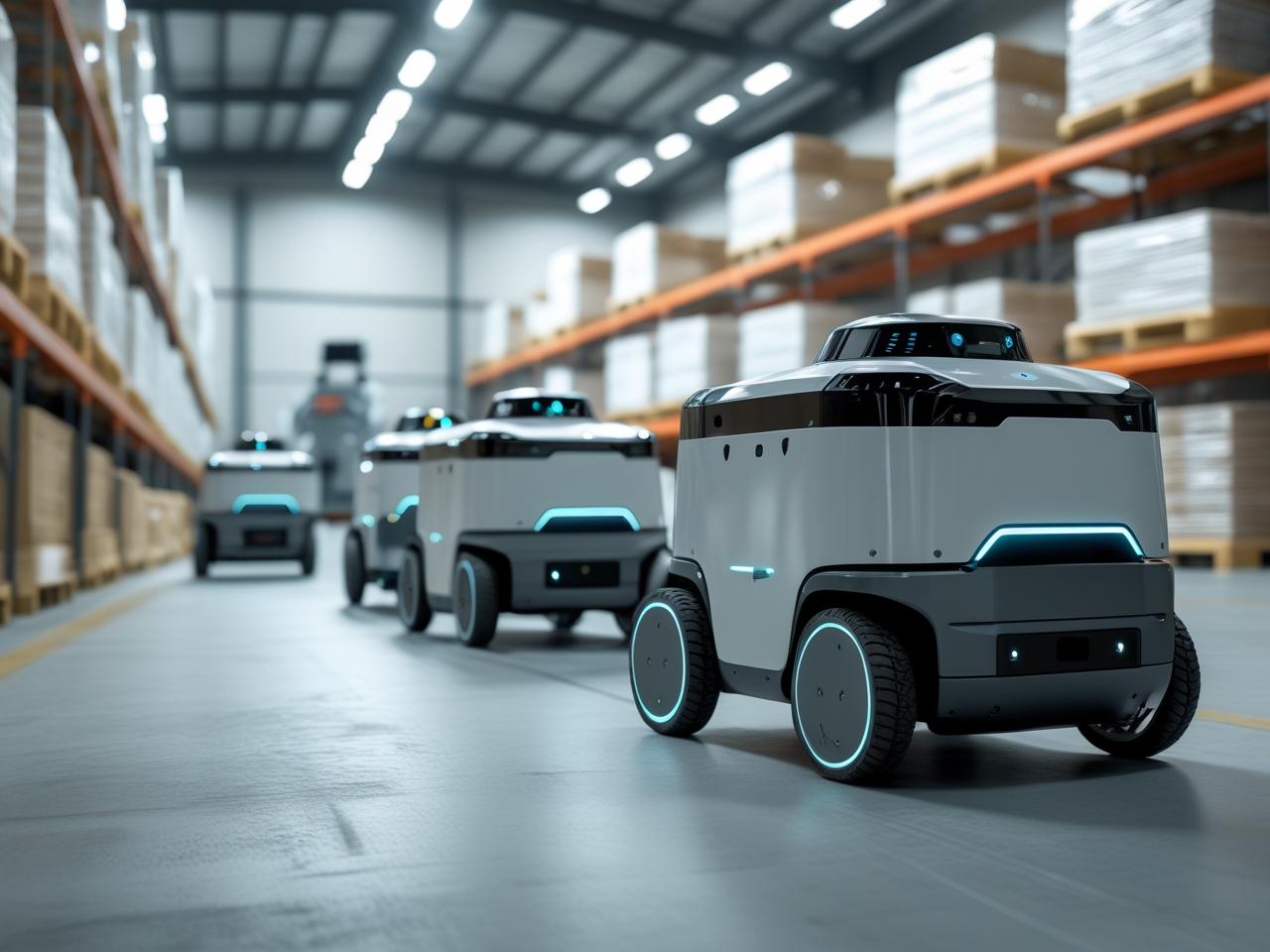
A Look Back: The History of Automated Guided Vehicles (AGVs)
The world of warehouse automation, logistics, and manufacturing has undergone a seismic transformation over the last several decades—and automated guided vehicles (AGVs) have played a major role in that evolution. From humble beginnings as wire-following tow tractors to today’s sensor-rich mobile robots, AGVs have evolved in step with advancements in electronics, software, and mechanical systems.
In this blog post, we’ll take a closer look at the automated guided vehicle history, tracing how these machines have matured into the intelligent workhorses of modern material handling.
1950s: The First AGV
The origin of the AGV dates back to the 1950s in the United States. The first AGV was essentially a modified towing tractor that followed a wire embedded in the floor. Designed by Barrett Electronics, this early machine was introduced in 1953 and marketed as a “driverless vehicle.”
Its primary use was in pulling carts through warehouses and manufacturing plants along fixed paths. Though basic by modern standards, it introduced a revolutionary concept—automating repetitive material handling tasks to reduce labor costs and increase efficiency.
1970s–1980s: Expansion and Industrial Adoption
The 1970s and 1980s marked a period of growth for AGV technology, driven by industrialization and the rising cost of labor in the developed world. During this time, AGVs became increasingly common in automotive and heavy manufacturing, where they were used for moving parts and assemblies between workstations.
Guidance systems began to diversify. In addition to embedded wires, magnetic tape and optical sensors were introduced to allow for more flexible path configuration. AGVs could now be reprogrammed and redirected, albeit still within rigid operating parameters.
This era also saw the emergence of unit load carriers and fork-style AGVs, broadening the range of applications.
1990s–2000s: Smarter Systems and Wider Adoption
In the 1990s, AGVs took a leap forward in intelligence and adaptability. Onboard microcontrollers became more advanced, enabling smarter route planning and safer navigation. Sensors for detecting obstacles, humans, and load weights began to appear in mainstream AGV designs.
Battery technologies also improved, allowing for longer runtimes and shorter charge cycles. The growing demand for lean manufacturing and just-in-time delivery further accelerated adoption in sectors like food & beverage, pharmaceuticals, and retail distribution.
By the early 2000s, AGVs were evolving into more than just guided vehicles—they were becoming autonomous platforms capable of real-time decision-making within defined operational zones.
2010s–Today: The Rise of Autonomous Mobile Robots
While AGVs still play a critical role, the 2010s introduced a new era with the emergence of Autonomous Mobile Robots (AMRs). These machines are similar in form and function to AGVs but operate with greater flexibility thanks to SLAM (Simultaneous Localization and Mapping), LiDAR, visual sensors, and AI-driven path planning.
AGVs today are expected to do more with less—handle complex payloads, navigate dynamic environments, and integrate seamlessly with warehouse management software (WMS) and enterprise systems.
This leap in functionality has driven demand for advanced intermediate components such as:
Load cells for precise weight measurement, load monitoring, and enhanced safety features in material handling
DC axial fans for cooling heat-sensitive processors and power electronics
Miniature ball bearings to ensure smooth, low-friction motion in tight assemblies
Force sensors for real-time load feedback and safety monitoring
Battery ICs to monitor and manage power with precision
Wheel hub motors for integrated motion in compact vehicle bases
Looking Ahead: The Future of AGVs
As AGVs continue to evolve, we can expect increased convergence between mechanical hardware and intelligent software. Future AGVs will likely leverage edge computing, wireless charging, and enhanced 3D vision systems for even more autonomy and adaptability.
The path ahead builds on decades of iteration—each generation of AGV shaped by innovations in sensor technology, component miniaturization, and smarter motion systems.
The history of automated guided vehicles reflects the broader story of industrial automation: a constant push for greater efficiency, safety, and scalability. For those building the next generation of AGVs, understanding where these machines came from provides valuable context for where they’re going.
Supplying tomorrow’s AGVs starts today. We support AGV manufacturers with motion, thermal, sensing, and power components engineered for the demands of mobile robotics.

